The Versatile Pop 9
17 29 Share TweetSome people give up a bit too soon on this little gem. With a little bit of effort this could be one of the most flexible cameras in their bag.

Love/Hate
This camera, and multi-lens cameras in general, are one of those things that you either love or hate. Multi-lens cameras have actually been around a long time. Some of the earliest ones were cameras with two lenses for taking stereo photographs, cameras with multiple lenses firing in sequence for high speed photography before roll film and motion picture cameras had been invented, and cameras with as many as fifteen lenses arranged in a grid and firing simultaneously to do rapid reproduction copying for things like sheets of postage stamps.
Some multi-lens cameras, such as the Lomography Actionsampler or the Lomography Supersampler, take pictures in sequence. Some, such as stereo photography cameras, take the pictures simultaneously. The Pop^9 is the latter. It takes nine pictures at exactly the same time, but (and this is an important but) they are not exactly the same. The placement of the lenses actually creates a tiny bit of parallax, that is a view from a slightly different angle for each lens – just like the difference between what your right eye sees and what your left eye sees. This means that you can use your pop^9 to do stereograms! I’ll talk about that later.
The Pop^9 is like a strong spice. It can take something mundane and turn it into something interesting, even exciting. But, just like a strong spice, it can get overused and you can get tired of it pretty quickly. Lots of people buy the Pop^9, shoot a roll, love the results, shoot another roll, and get bored because it’s just the same effect over and over again. The problem is that they just haven’t stopped to think about all the possibilities that nine slightly offset lenses can give them.
Basic Features
Let’s talk about some of the basic features of this camera, starting with the most obvious – the nine lenses.
This camera has nine lenses arranged in a three by three grid. When you take a picture, you end up with nine mini-pictures that fit onto a single 35mm frame. That means that each individual frame is one third the size (one ninth the area) of a standard 35mm frame. That means that if you blow each individual picture up to the size of a standard 35mm frame, the grains will be three times bigger. So, if you plan to crop out individual pictures you can expect some graininess – even with 100 speed film.
All nine of the plastic lenses have a focal length of 22mm with an aperture of f/11. This is an extremely short focal length. The very popular Vivitar Ultra Wide and Slim also has a 22mm lens, but it has an aperture of f/8 which is one full stop faster than the Pop^9. The focal length of Pop^9 is deceiving however because the angle of view depends on the size of the frame. Since the individual frames on the Pop^9 are one third the size of a standard 35mm frame, the angle of view is actually narrower than normal. I haven’t done the calculations, but I think the field of view is about the equivalent of a 65mm lens on a standard 35mm camera. The smallish aperture allows the camera to focus from about .8m to infinity which makes this camera very fast to use.
The 1/100" shutter is completely mechanical so you can use this camera without batteries unless you want to use flash. The combination of fixed aperture and fixed shutter speed makes this a “Sunny 16” camera which means you should use the Sunny 16 Rule to choose the film speed. The Sunny 16 Rules says that on the sunniest day, if you’re using an aperture of f/16, your film speed should be the denominator in your shutter speed. (f/11 is close enough to f/16 so that we can forget that for a second.) For this camera that means that on the brightest, sunniest day with no shade we can use 100 ASA film to get good colors and small grain. In bright sunlight with a few clouds – 200 ASA. Cloudy or indoors with a flash – 400 ASA. Overcast, low light, indoor flash – 800 ASA. I usually just load my Pop^9 with 400 ASA film because it can handle being under- or overexposed a bit. If I know I’m going to be indoors using a flash, I will load it with 800 ASA so that I can get some reach. If I know I’ll be outdoors in bright light the whole time, I load it with 100 to get the best colors and grain.
The Pop^9 has a built-in flash that’s not very powerful and takes 10 seconds to recycle which is very slow. Still, at least you get a flash! This means you’re not out of luck when the sun goes down or you go indoors. This camera works best when you’re close to your subjects anyway, so a weak flash is not really a problem.
The Pop^9 comes with a wrist strap with a special “leash” attached to it for the square lens cap. This is a nice feature that prevents you from losing your lens cap. Some people don’t like lens caps because some people forget to remove the lens cap when they take pictures. Don’t forget to remove the lens cap.
The Pop^9 does not allow double exposures. The film has to be advanced to cock the shutter and it can’t be tricked like some other cameras. The only way to do double exposures with the Pop^9 is to reload the same roll after it has already been exposed. I took apart a Pop^9 to look into the possibility of doing a multi-exposure mod. The mod is actually possible, but putting the camera back together is not easy. It’s actually a very tricky disassembly and even tricker assembly. I do not recommend it. I can no longer use that camera.
The Pop^9 also has no “B” setting, so there are no long-exposure capabilities. As with the double exposures a “B” setting mod is possible, but disassembling and assembling the camera is very difficult. There are also no shutter release or tripod threads, so this camera simply does not do well in low light without a flash.
The Pop^9 is one of those odd, somewhat uncommon cameras with the film counter on the bottom. The film advance wheel and rewind crank are also on the bottom. Unlike most cameras, you wind from right to left to advance the film. Having the advance wheel on the bottom take a bit of getting used to, but it leaves the top of the camera uncluttered.
The Pop^9 has a window on the back so that you can easily tell whether or not you have any film loaded, and if so, what kind.
Overall, this is a great looking camera that feels very good in your hands. It’s very small and smooth and that alone makes it a very tempting camera to have with you all the time. The construction has a surprisingly solid feel for a plastic camera. The back closes tightly with an assuring click. The switch to turn on the flash is a little difficult to move, but it doesn’t feel flimsy. The camera comes in two colors – black and gold. The gold looks very good, and that’s the one I have (three I have, actually), but I would really like to have a black one. It’s stealthier and I could actually use it for street photography. The gold one draws a lot of attention. Of course, that’s not always bad.

Using the Pop^9
Loading the Pop^9 is straight forward except that it’s backwards from most cameras. The film canister is on the right and the take-up spool is on the left. The take-up spool is wide with two teeth to engage the sprocket holes in the film. You don’t need to insert the film into a slot. All you need to do is extend the film over the spool and close the back. A guide in the back presses the film against the take-up spool where a few turns of the film advance wheel will eventually catch the film and start winding it on.
Shooting with the Pop^9 is easy. Just remember to remove the lens cap. If you’re using the flash you need to wait until the ready light on the back of the camera is fully bright to make sure that it’s fully charged. The Pop^9 has a direct viewfinder that’s fairly accurate with respect to how much will be included in the picture, but I often don’t use it.
Winding is fast and easy, but again, it’s backwards from how most other cameras work.

The flash is recessed into the camera and has a space around it that you can use to hold filters over the flash for special effects. You can also work out various ways to put colored filters over one or more of the lenses to enhance the Andy Warhol “Pop Art” effect. I’ve submitted some Lomography.com tipster articles that describe in detail how to create a foam mask that can be used to cover and uncover individual lenses and to hold filters in place.

Picture with colored filters over the lenses:
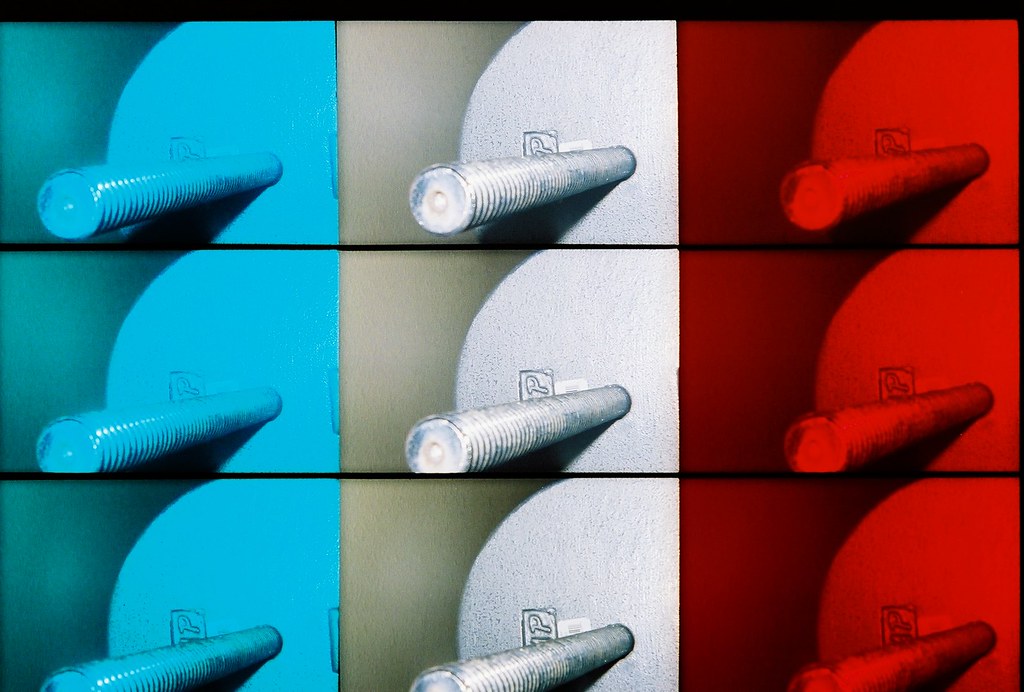
Simple mask I cut out of craft foam to hold filters in place and mask individual lenses:

Unloading is a simple operation. You press the rewind button located on the bottom of the camera and turn the rewind crank. If you want to use the same roll again for multiple-exposures on this or another camera, you just stop rewinding as soon as the tension lets up.
Developing and Post Processing
You might be tempted to warn your lab that the film was exposed by a multi-lens camera, but it’s not necessary and it would probably just confuse them. All nine of the pictures fit in a standard 35mm frame, so they don’t have to do anything special to process, cut, or scan the film. If you want to do any of the special post-processing tricks however, you should ask them to scan at three times their normal scanning resolution because each individual picture is three times smaller than normal.
In my opinion, post processing is where you can make this camera shine. Most people assume that this camera takes nine identical pictures simultaneously, but this is not quite true. As I mentioned earlier, the pictures are slightly offset from each other because something called parallax. Parallax is the difference between the pictures because they were shot from slightly different angles – just like the difference between what your right eye sees and what your left eye sees. With the Pop^9, you get one picture in the middle surrounded by eight pictures all looking at that one thing from slightly different angles. This lets us create many kinds of stereo images including a new kind of “stereo” image called a wobble GIF. The nine lenses let us create a “super wobble” GIF. I’ve submitted a Lomography.com tipster explaining in detail how to get images like these:
Standard Red-Green Anaglyph Stereogram (Use 3D Glasses to See in 3D)
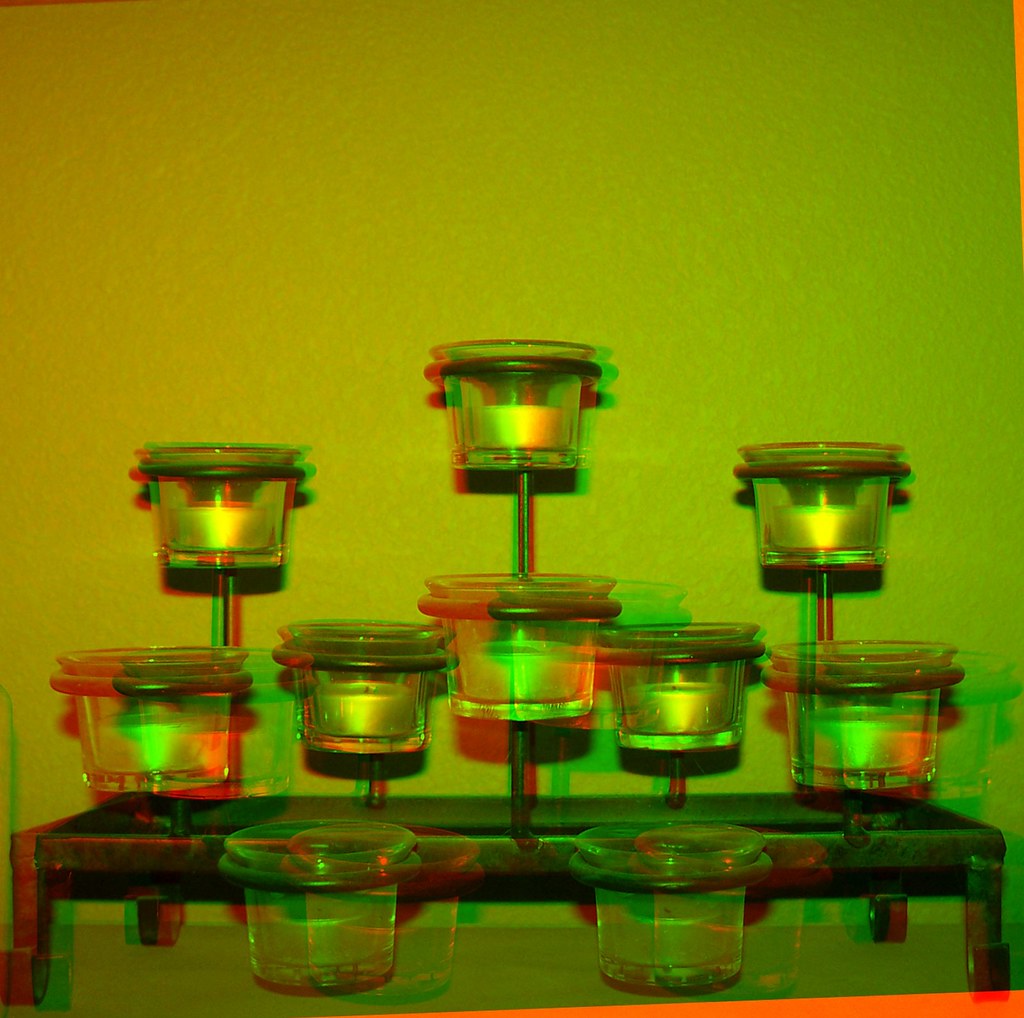
Cross-Eyed Stereogram (Cross Eyes to See in 3D)

Wobble GIF

Pop^9 Super Wobble
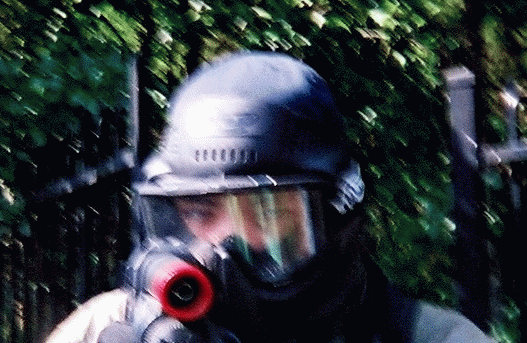
All of the preceding effects were done by post processing standard Pop^9 images. There’s no law that says you can’t crop out individual images as well if you happen to like the way a picture came out but don’t care for the polyptych effect.
Modifications
All is not lost with respect to Pop^9 modifications. There is at least one modification you can do without taking the camera apart. That is, you can cut out one or more of the light baffles that keep the images from overlapping. By doing this, you can cause the images to blur into each other. You can also create a mask like the one I previously showed you. You can also combine these two to get some interesting effects like the following:
Third Frame Pop^9

Pop^9 Mega Merge
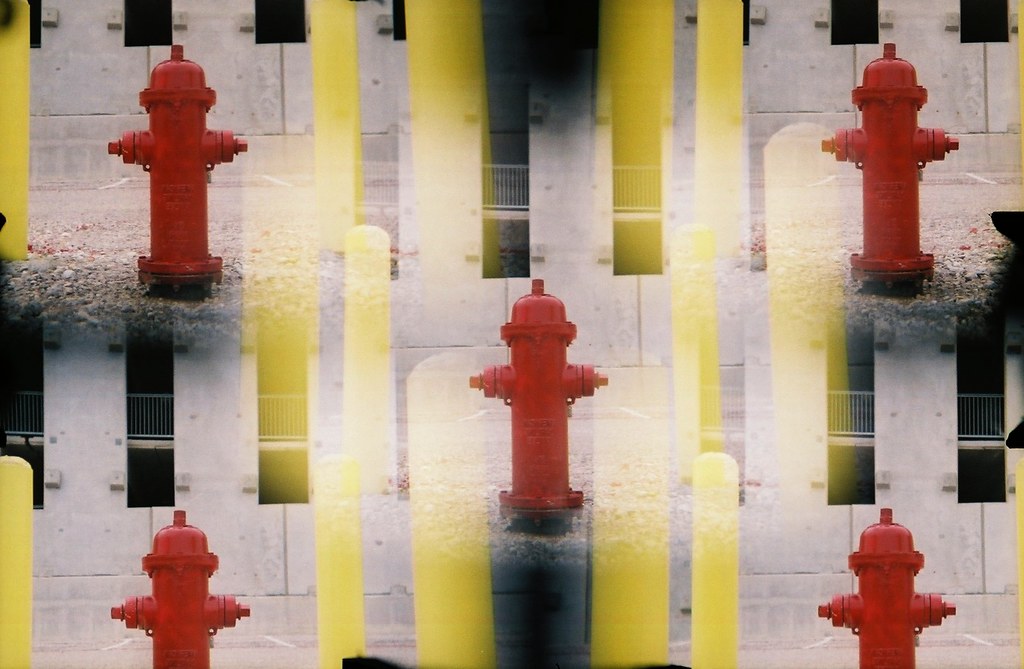
Pop^9 Vignette
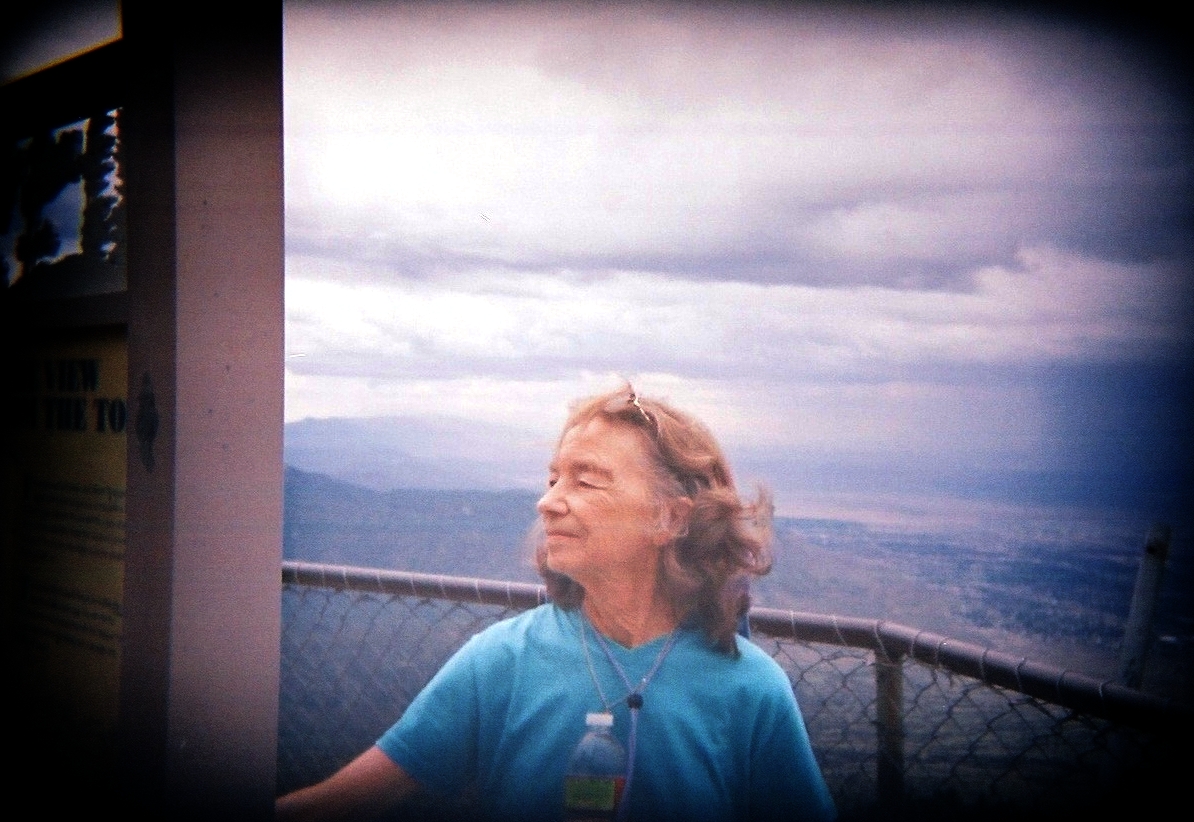
In Conclusion
Many people grow tired of this little spider-eyed machine, but I’ve just shown you eight different types of pictures that you can get from this one camera – some of them totally unique and virtually impossible to get with any other camera – even an expensive digital.
This camera is small, light, sexy, exciting, flexible, interesting, and just plain fun. If you have one, you should consider digging it out of your closet and shooting a few rolls through it. If you don’t have one, you should consider getting one and playing around with it. You think you’re good with one lens. Let’s see if you can handle nine.
written by gvelasco on 2009-10-15 #gear #review #pop-9 #multi-lens-polyptych-flexible-stereo-vignette
































17 Comments